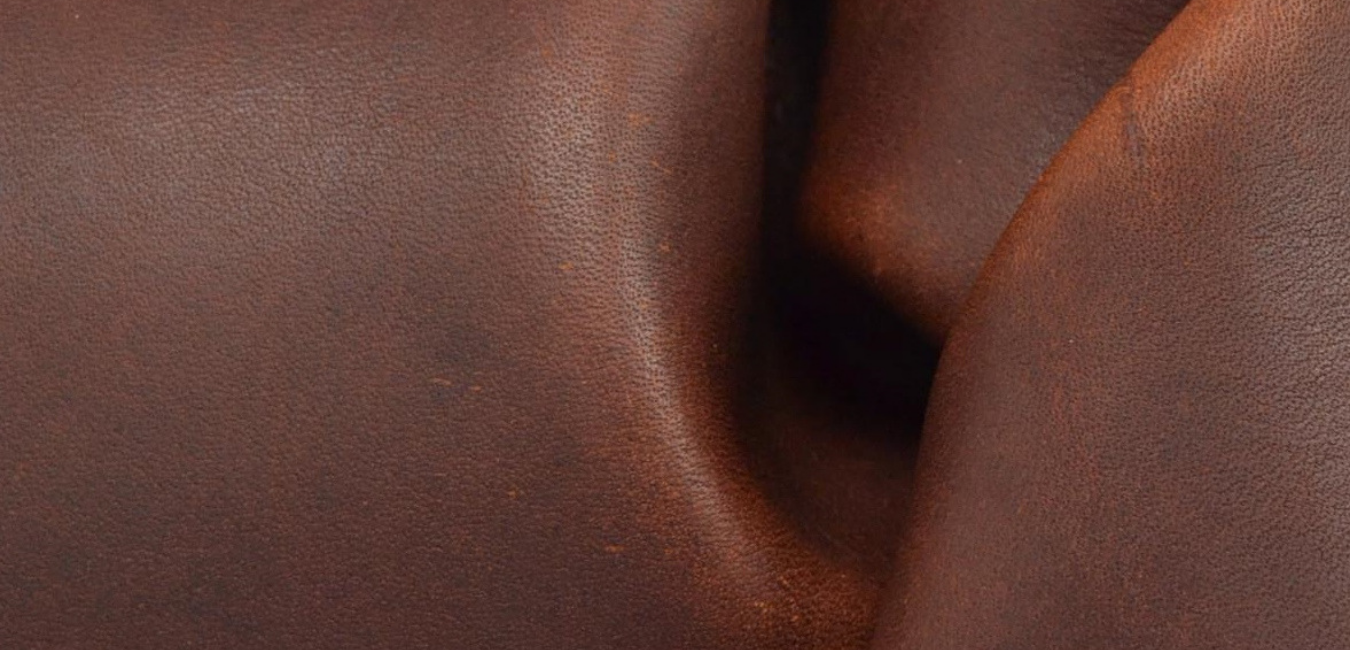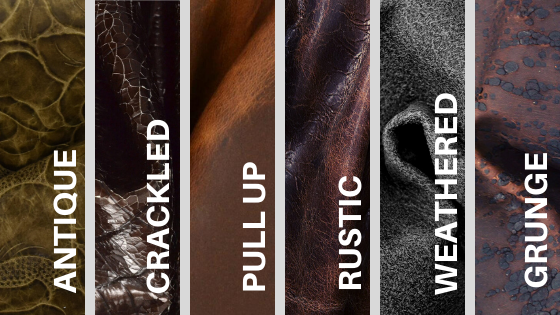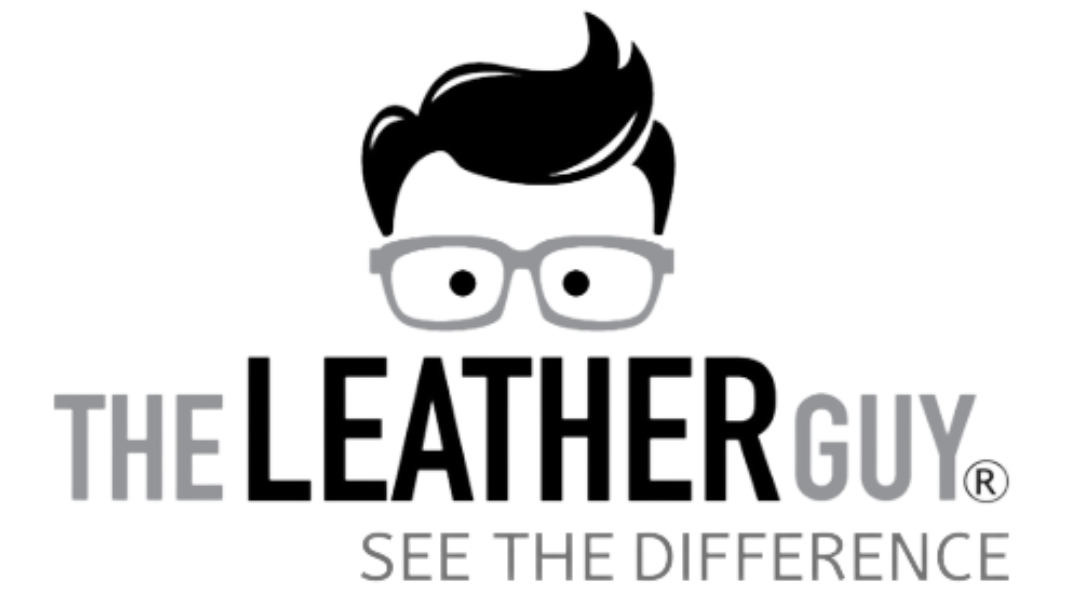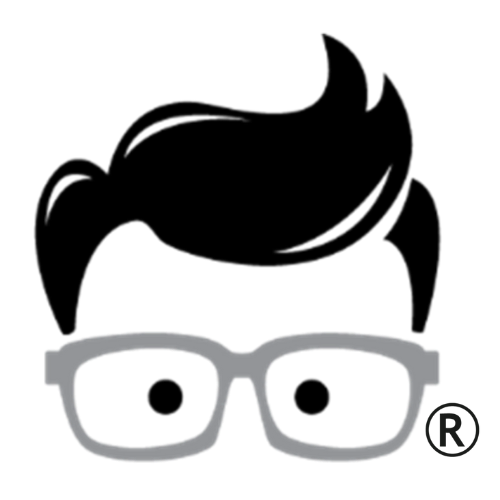Leather 101: Leather Grains, Textures and Finishes; What is the difference?

Some makers love Pebbled, antiqued leather while others love Smooth, pull up leather.
Knowing what leather texture you love makes it so much easier to pick out the right kind for your project. Not sure which one is your favorite?
We'll break down what each texture looks and feels like, so you can be sure to find the perfect one for you!
To start, we have several different grains and textures that we sell here at The Leather Guy.
The 5 most common Grains and Textures you will see here at TLG are Smooth, Flat Grain, Grainy, Pebble, or Embossed.

Smooth: completely smooth, with no texture at all. Most commonly found in Oil Tan, Veg Tan, or Patent Leather.
Flat Grain: has a visible grain but feels smooth to the touch. A number of our collection leathers feature this grain.
Grainy: has a visible grain that you can feel as you run your hand over it. Bison hides have a very distinct Grainy texture.
Pebble Grain Leather: has a very bold, typically tight grain. It resembles a pebbled beach, hence the name. It comes in three sizes from small to large pebbled. This grain also has a distinct feel to it.
Embossed: any hide that has had a texture applied to it using heat and pressure. It can be used to create man-made patterns such as basket weaves or the iconic Saffiano crosshatch, but can also be used to make cowhides look like more exotic pieces like Crocodile or Ostrich.
Nubuck and Suede are also popular textures, but can easily be mistaken for one another.

Nubuck: is the Top Grain of the hide, sanded down to have a soft, suede-like feel. Some Nubuck may still have a noticeable grain.
Suede: is the underside of the hide, with the top grain leather split away. It creates a very soft and fuzzy nape on both sides of the leather.
Suede and Nubuck can require specialized care due to the soft and fuzzy finish. That's why you'll find so many suede specific products out there in the world!
Lastly, you may encounter a grain called Hair Cell. This is found frequently on pig leather or as an embossed texture.

Hair Cell Texture: is the appearance of the hair follicles where the animal's hair grew from.
Pig hair cell has a distinct grouping of three follicles. It is actually a very popular embossing pattern. The natural may not stand out as much depending on how the leather is finished. Up above is a suede pig leather, but you can still make out the slight traces of the hair cell grain!
Now that you know all about the textures and grain, let’s talk a bit about finish and appearance! You will commonly see 6 of each in our shop. We’ll start with the leather finish!
The finish of leather is described in much the same way as paint finishes. You’ll find them in Natural, Matte, Satin, Shiny, Glossy, and Patent.
Natural and Patent are the two furthest from each other on the finish spectrum.

Natural- has no finish applied at all.
Patent – a heavily finished effect that gives it a highly lustrous, enamel type appearance. It can feel like plastic. It is sometimes mistaken for faux leather.

Matte – a true matte finish with no shine at all.
Satin – a step above matte, with a very slight sheen to it.
Shiny – has a noticeable gleam to it.
Glossy – high shine with a glare, reflects light.
Bear in mind, that finish can change the feel of leather. Sometimes it can make the leather feel less supple and less natural. It can certainly make a leather feel stiffer, which is typically the case with a finish like Patent. The finish can also disguise or cover the grain and texture of leather.
Make sure to check the temper of leather to ensure you are getting the right feel for your project.
That brings us to leather appearance!
The appearance of leather is something that naturally occurs in the hides being processed (Grunge), or is something that occurs during the tanning process (Pull Up).

Antique/distressed – looks worn, old, aged. Like it has a patina. This is an effect commonly added by leatherworkers when tooling veg tan.
Crackled – looks as though it has cracks in the finish evenly and throughout, but isn't really cracked. This is for looks only and does not affect the structure or flexibility of the hide.
Pull-up – changes to a lighter color when stretched or creased (resembles lowlights in hairstyles).
Rustic – western or a worn/used look.
Weathered – similar to antique but also looks like it has spent time out in the elements.
Grunge - leather that has lots of scarring, bug bites, brand marks, or/and uneven colors and grain. Once undesirable, it has become quite popular due to the unique look of each piece.
Makers spend an immense amount of time adding age and wear to some projects. Luckily, because of all these options in appearance, you can create a piece that already has a worn and loved look.
These appearances are not for everyone but can make a piece look truly unique. They do not change the quality of the leather, just enhance its beauty!
So there you have it, some of the most common grains, textures, and finishes out there. The wide variances available in genuine leather are part of what makes it such a great material to work with! What pieces do you find yourself making your leather goods with most often? Let us know in the comments!
We just recently started selling sample rings in our shop that allow you to see different thickness, finish, temper, and leather types. If you would like to see and feel each of these types of leather yourself, pick up a ring today!
Want to learn more about how to shop for leather? Check out the rest of our Leather 101 Blog posts!

